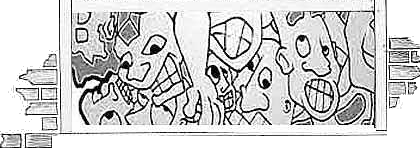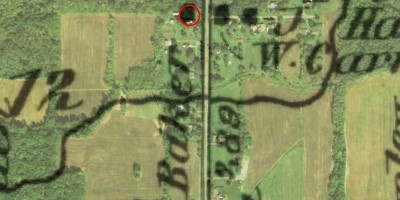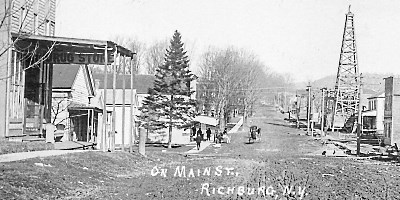The Alexander and Jane Woods Family of Ireland
The Woods family emigrated from Tyrone County, IRE around 1800. Many settled in Mercer County, located in northwestern Pennsylvania. According to the family, Helen Woods, never talked much about her family history, even though considerable interest existed on her husband’s Baker side of the family. Maybe it was a Ireland vs England thing. Maybe she was not interested in her family history. Whatever the reason, we must rely on written accounts of others to piece together the puzzle. One important work is “History of Mercer County, Pennsylvania : its past and present..”, 1888. It discusses Alexander’s grandfather, John W Woods, as well as his great grandfather, William Woods who first settled the area.
To move one generation back, one must utilize “The history of the Woods family : with a genealogy of Alexander Woods and his descendants” by Roy Cleo Woods. The author finds that Alexander Woods and Jane Wilson were likely the parents of several Woods family member that settled in West Pennsylvania and Ohio in the early 1880’s. He describes a series of letters saved by various family members that indicated that the sons. This evidence is persuasive enough that branches have been drawn for each of these sons.
If it is OK to generalize, these family share some interesting characteristics. They remained farmers for a very long time, and they remained clustered in the midwest in states like Iowa, Kansas, Indiana and Missouri. Due to their farming heritage, many of the family remained quite large for several generation with 8-10 children not uncommon. Much of their written history remains captured in rural towns and newspapers. Several of these small town newspapers are making their way on-line, opening a view of their lives.
The Branches of the Alexander and Jane (Wilson) Woods Tree
A four generation tree is shown below. Note that one male survived for the next two generations after William and Mary. Therefore all known male Bakers can trace their ancestry to Joseph & Alice (Jefts) Baker. This has reduced the overall number of descendants somewhat. Nevertheless, we are left with several surviving branches. I am part of the Joseph and Sarah (Wheeler) Baker branch through their son, Peter Baker, who served in the Revolutionary War.
Six Branches of Alexander and Jane (Wilson) Woods (click name see them in TNG)
Articles
DNA Results
There are two relevant DNA test types: autosomal and Y-DNA. Autosomal DNA, common to Ancestry and 23&me, represents the DNA from all DNA sources including all your male and female ancestors. By the 5th or 6th generation, it becomes very difficult to analyze. For my case, my mother’s and my aunt’s DNA was able to show several matches to Peter and Lydia Dudley. Going one generation back to Joseph and Sarah (Wheeler) Baker, a single DNA match can be detected.
Y-DNA represents the DNA on the Y chromosome that a father passes to a son. It allows us to go very far back in time – all the way to immigrant William Baker and beyond. I have a male Baker cousin who tested, kit number 685995. It matches perfectly to another male Baker who shares Peter Baker as a common ancestor. Therefore we have two test types that show a link to Peter Baker. Currently, only the Joseph Baker branch has tested their Y-DNA. It would be like interesting for any other surviving member of the other branches to test.
The Y-DNA does not show a match to any other male Baker in the Baker Y-DNA database. This result means that William Baker is not, as of now, related to any other Baker immigrant who settled in New England around the same time, including Edward Baker of Lynn, Alexander Baker of Boston, and Francis Baker of Yarmouth.
Sources
Most credit must be given to previous researchers who did research the traditional way- by pouring over dusky books in county courthouses, or who wrote letters to strangers around the country. Here is a sampling of some of these works. Many are now available on the internet.


